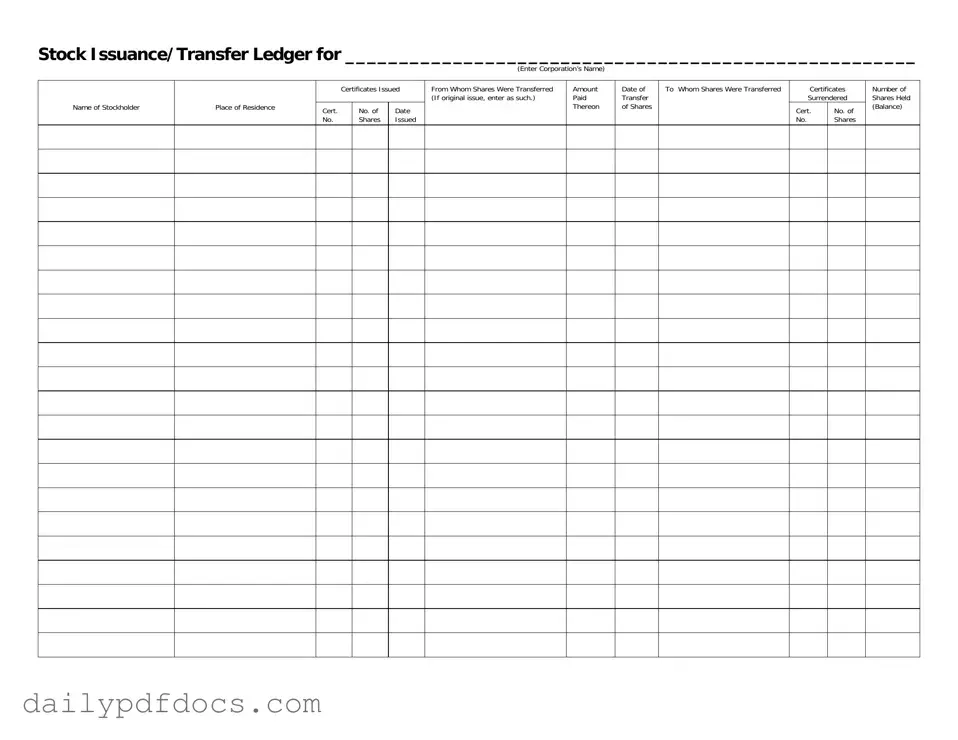What is the purpose of the Stock Transfer Ledger form?
The Stock Transfer Ledger form is used to document the issuance and transfer of shares within a corporation. It provides a detailed record of stockholders, the number of shares issued, and the transactions related to those shares. This form helps maintain accurate ownership records and ensures compliance with corporate governance requirements.
Who should fill out the Stock Transfer Ledger form?
The form should be filled out by corporate officers or designated personnel responsible for managing stock transactions. This typically includes the secretary or treasurer of the corporation. Accurate completion of the form is crucial for maintaining the integrity of the corporation's stock records.
What information is required on the Stock Transfer Ledger form?
Essential information includes the corporation's name, the name and residence of the stockholder, details of the shares issued (including certificate numbers and dates), the amount paid for the shares, and specifics regarding any transfers. The form also requires information about the shares surrendered and the remaining balance of shares held by each stockholder.
How do I record a transfer of shares on the form?
To record a transfer, enter the name of the stockholder who is transferring shares, the number of shares being transferred, and the date of the transfer. You must also include the name of the individual or entity receiving the shares. If applicable, note the certificate number of the shares being surrendered in the transaction.
What should I do if shares are transferred multiple times?
In cases of multiple transfers, each transaction should be documented separately on the Stock Transfer Ledger form. This ensures a clear and accurate history of ownership. Each entry should include the relevant details such as the date of each transfer and the parties involved.
Is it necessary to maintain a physical copy of the Stock Transfer Ledger form?
Yes, maintaining a physical or digital copy of the Stock Transfer Ledger form is essential. This record serves as legal proof of stock ownership and transactions. Corporations should keep these records for a specified period, as required by state law and corporate bylaws.
Can the Stock Transfer Ledger form be modified?
While the format of the Stock Transfer Ledger form can be adapted to meet the needs of a corporation, it is important to ensure that all required information is included. Any modifications should not compromise the clarity and accuracy of the records. Consult with legal counsel if significant changes are needed.
What happens if there are discrepancies in the Stock Transfer Ledger?
If discrepancies arise, it is crucial to investigate and resolve them promptly. This may involve reviewing transaction records, contacting stockholders, and making necessary corrections. Maintaining accurate records is vital for legal compliance and shareholder trust.
How often should the Stock Transfer Ledger be updated?
The Stock Transfer Ledger should be updated immediately following any stock issuance or transfer. Timely updates help ensure that ownership records are current, which is essential for effective corporate governance and shareholder communication.

